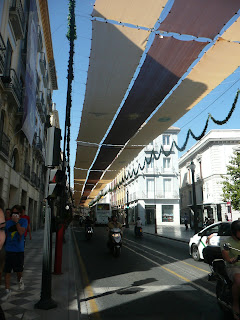
Andalucía is located in the southern part of
Due to all the different peoples and civilizations that have called Andalucía home, it has become a melting pot for arts and culture. One of the most recognizable artistic features Andalucía has is that of the art of Flamenco. Flamenco was first mentioned in writing around the 18th century, but most probably created long before then.
Flamenco is a style of music and dance that was created by the gypsies that lived in the region of Andalucía. The origin of Flamenco is very hard to pin point. Some historians believe that the musical aspects originated during the time of the Moorish occupation dating back to 711 A.D. When the Moors came to
There are three basic parts to Flamenco, toque: guitar, cante: song and baile: dance. Toque, the first part of Flamenco, is the art of playing the guitar. The traditional Flamenco
Most true lovers of Flamenco believe that the soul of Flamenco is in the songs. The performers sing with so much emotion and usually on subjects all can relate to. Although most of the flamenco songs seem to be spontaneous, these songs follow strict musical and poetic rules. Cante Flamenco can be categorized into two themes, compas or libre. Compas f
The final and the most memorable part of Flamenco is baile or dance. Flamenco dance is known for its emotional intensity, sound, and movement. The most authentic form of Flamenco is known as Flamenco Puro. This form of Flamenco is always preformed solo and is more improvised than choreographed. The dance consists of stomping ones feet, clapping ones hands, and extending ones arms while curving the wrists around ones body all in a rhythmic movement. The women wear traditional Flamenco dresses, some with bright colors and spots, and other times with muted colors even black, depending on the cante. The men usually wear slacks with a button down shirt and keep their “look” very simple. In traditional Flamenco young people are not considered mature enough to convey the soul of Flamenco and therefore there usually not very many young dancers. A Flamenco dancer usually does not hit their peek until their early thirties and will dance until their fifties or more.
Flamenco music, songs, and dance t



















